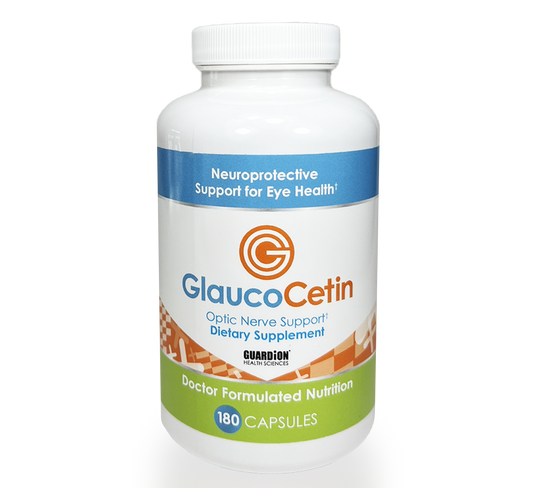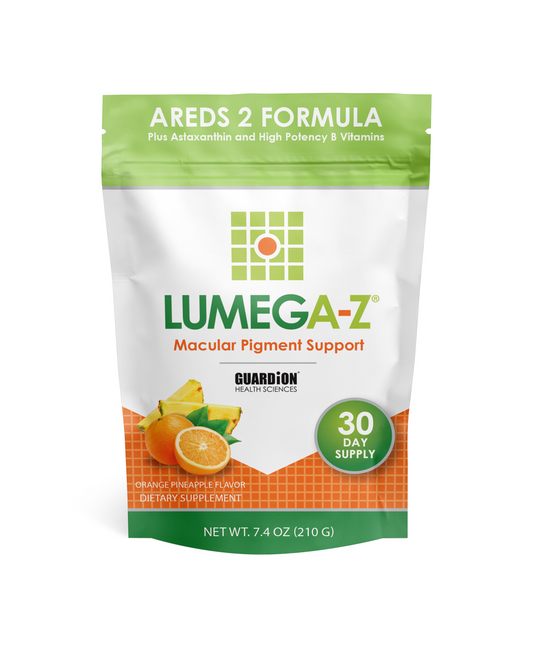Key Takeaways:
- The eyes use a large amount of the body’s energy.
- How does the human body produce cellular energy?
- What are the mitochondria and how do they support our vision?
- The best nutrients to include daily to give your eyes the energy they need.
Did you know that your eyes require a lot of your body’s energy? In fact, visual processing uses 44% of your brain’s energy – that’s a lot! We know that food is our body’s fuel source, but do you ever wonder how the body creates energy from food? Without getting too technical, let’s discuss this process and how important it is for our eye health.
How Do Humans Create Energy from Food?

When we eat food, the human body uses the nutrients in those foods and turns them into energy through a process called the Krebs Cycle. During this biochemical process, nutrients from carbohydrates, lipids (fats), and proteins are broken down to release energy. When this energy is released, it’s then caught by an energy carrying molecule, called an Adenosine triphosphate (ATP). An ATP is produced in the part of the cell called the mitochondria. Mitochondria are the power plants of every living cell in the body, including optic nerve cells. In fact, the highest concentration of mitochondria is at the optic nerve. Optic nerve cells produce cellular energy for visual processing so they can relay images from your eyes to your brain as energetically as possible, so healthy mitochondria equal healthy visual field function. As mitochondria are the power plants, an ATP is the shuttle delivering energy to places within the cell where energy consuming activities are taking place. For example, an ATP is in charge of delivering energy to the cells at the base of your optic nerve that support the energy consuming activity that is your vision.
Why Do Optic Nerves Need So Much Energy?

Your optic nerve is made of millions of nerve fibers that send visual messages to your brain. Each one of your eyes has its own optic nerve and each optic nerve has branches that travel to your brain or join with other fibers. These branches include:
- Half of the nerve fibers from your left eye continue to the left side of your brain.
- Half of the nerve fibers from your right eye connect to the right side of your brain.
- The remaining nerve fibers join together. Your brain receives signals from both eyes at the same time to create a cohesive visual image.
Remember, your brain uses 44% of its energy for visual processing and properly functioning mitochondria provides optic nerve cells with energy required to support survival and maintain vision. In addition, there are approximately 1.2 million retinal ganglion cells at the base of the optic nerve. Retinal ganglion cells transport image forming information from the retina to the brain and they do not regenerate once they are lost. That’s a lot of mitochondria and retinal ganglion cells to keep nourished.
Maintaining Mitochondrial Function Through a Healthy Diet

You are what you eat, so making sure that your food sources satisfy your taste buds, and your mitochondria are key to energizing your eyes and your entire body.
Incorporating foods rich in antioxidants, protein, and other core nutrients can support mitochondria health. Some examples include:
- Colorful Fruits and Vegetables
- Lean Organic Meat
- Fresh Oily Fish
- Beans, Lentils
- Raw Seeds like sunflower or pumpkin
- Nuts (not salted or roasted) like Almond and Cashews
If you aren’t getting these on a consistent daily basis, supplementation may be necessary. Speak with your healthcare provider for recommendations. One eye health vitamin for ocular function support is GlaucoCetin. GlaucoCetin is an optic nerve cell vitamin supplement formulated with powerful antioxidants to help support, protect, & energize your eyes. Glaucocetin eye health vitamin provides targeted nutrients to help preserve the cells supporting the optic nerve, and therefore, supporting your visual field. It’s synergistic blend of ingredients include CoQ10, Astaxanthin, Curcumin, and Gingko Biloba for antioxidant protection and support. In addition, GlaucoCetin contains neuroprotective properties that provide ways to nourish mitochondria. This helps preserve optic nerve cells, retinal ganglion cells, and nerve fiber which helps to maintain optimal visual field.
From the moment you open your eyes in the morning, your optic nerve works to provide visual information to your brain. Eating a healthy diet and supplementing essential nutrients, when necessary, will help to ensure that your eyes are energized throughout the day to maintain healthy vision throughout all life stages.
Sources:
Energy Efficiency and the Visual System | The VisionHelp Blog
Krebs Cycle | Aakash + BYJU’S
Adenosine Triphosphate | Britannica
Mitochondria | National Human Genome Research Institute
Optic Nerve | Cleveland Clinic
Neuroanatomy, Cranial Nerve 2 (Optic) | National Institutes of Health (NIH)
8 Ways to Support Your Mitochondria | Wild Nutrition
Last Updated On: August 24, 2023
First Published On: August 24, 2023




